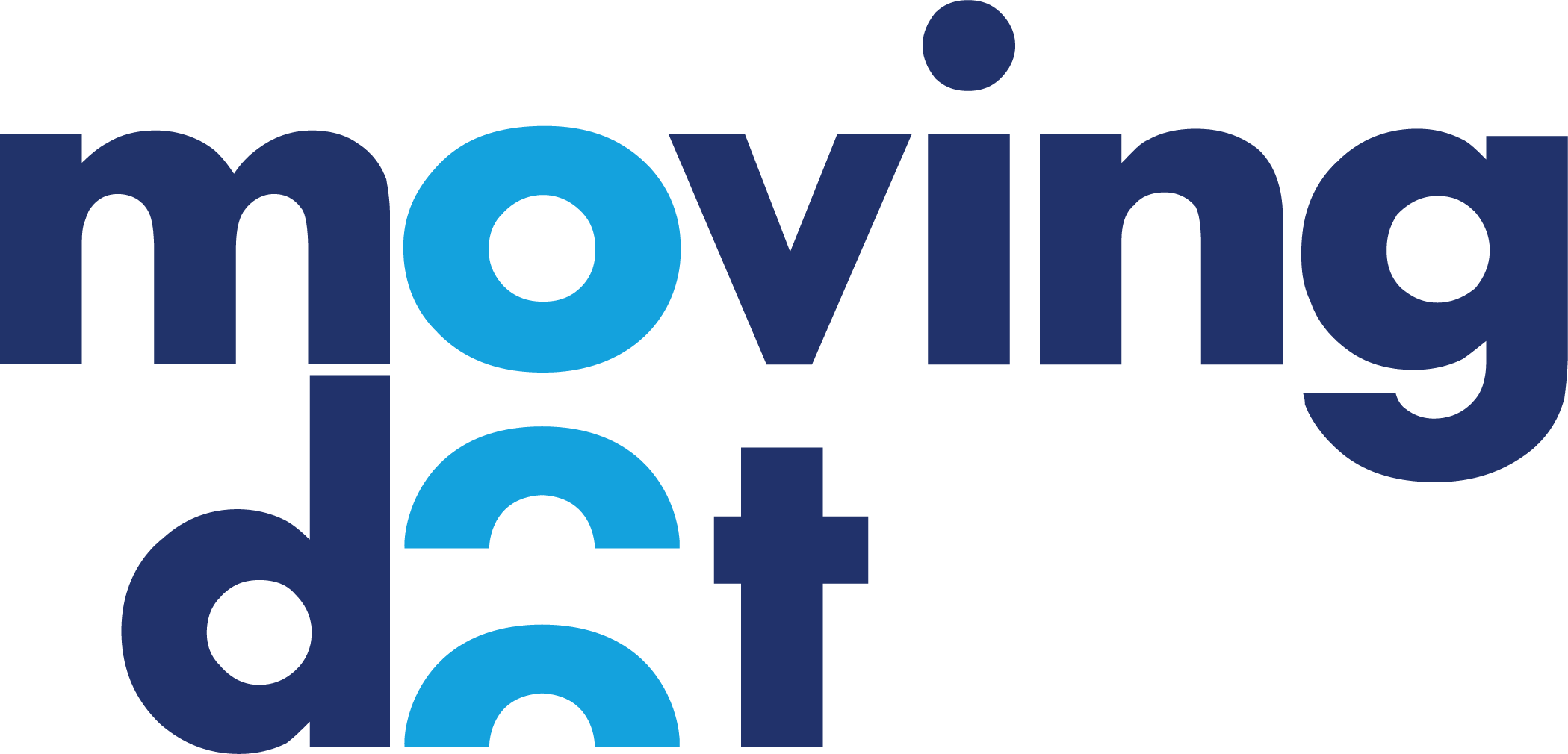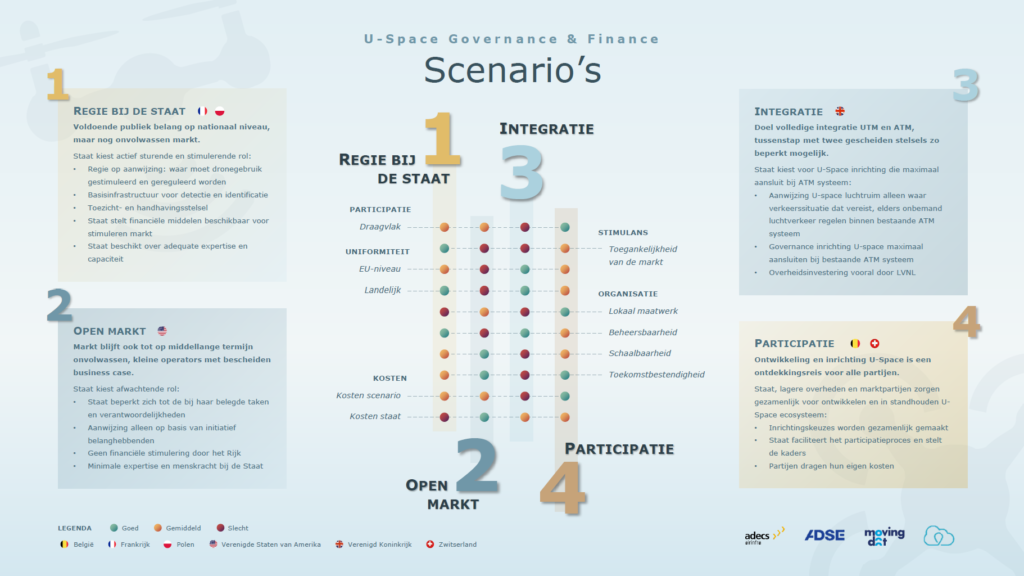MovingDot, with partners Adecs Airinfra, Airhub, PwC and ADSE, completed a study on the future governance & financing structure for U-space in the Netherlands. The study was commissioned by the Dutch Ministry of Infrastructure and Water Management.
U-space is the European regulatory framework for the future air traffic management of unmanned aerial systems (Implementing Regulation 2021/664). The regulation has to be implemented in EU member states by 27 January 2023.
The main reasoning behind U-space is that the current ATM system is not fit for the management of the foreseen large numbers of UAS movements. While in the ATM-system pilot-controller communication plays a central role, the traffic management of UAS will mainly have to be based on automation.
When implementing the U-space framework states will have to make choices on a number of issues, like:
- The initiative for designation of U-space airspace. Designation of U-space airspace is a State responsibility, but the State does not necessary have to initiate the requirement. It may choose to leave the initiative to stakeholders like local or regional authorities, public infrastructure managers, NGO’s (like nature preservation bodies) or even private parties;
- Provision of Common Information Service (CIS). Options may vary between service provided by the State, designation of a single national provider, designation of specific single providers for the different blocks of U-space airspace, or CIS data provision through USSPs;
- Availability of USSPs. USSPs are the providers of a package of services that is mandatory for the users of U-space airspace: network identification, geo-awareness, flight approval and traffic information. Without a USSP the use of U-space airspace is not allowed. In principal the State does not have to guarantee the availability of USSPs, she may leave this to the market. However, in specific circumstances a State may want to initiate the availability of a USSP, for instance in situations of poor initial market conditions. However, such initiatives may cause market organization issues;
- Law enforcement. Appropriate action against unlawful activity is of primary importance for an adequate funtioning U-space. This requires specific provisions in the field of detection, identification and authority;
- Funding and financing. The level of public intervention plays a crucial role in the funding and financing structure of U-space.
The study developed four models for shaping the governance & finance structure of U-space: a directing model (with the State in a pro-actively guiding, stimulating and facilitating role), a market model (with the State taking a cautious position), an integration model (with the UTM-system joining the ATM-system as much as possible) and a participation model (with an equal cooperation between the State, lower authorities and market parties, together running the UTM-system).
The study also provides insights in how other countries (plan to) execute the U-space regulation and how a selection of the Dutch drone sector prefers the regulation to be implemented.
Finally, the models were rated against several assessment criteria, resulting in a preferred model and advice on how to proceed with implementation of this model.
The cooperation between Adecs Airinfra, ADSE, AirHub, MovingDot and PwC gave the opportunity to bring added value from several perspectives, making sure to bring the knowledge of U-space structures to a next level. With this result, the Ministry will be able to pursue its road to an operational unmanned airspace.


